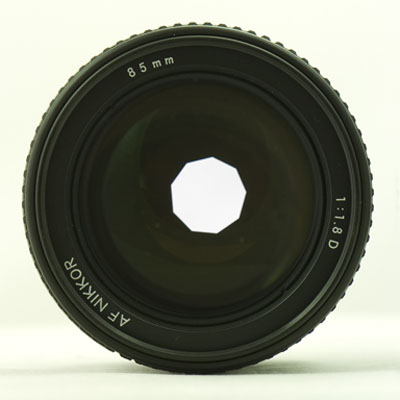Accurate focusing is one of the two main steps in obtaining an excellent image, the other main step is setting the camera to the correct exposure.
Generally the camera provides a focussing screen that becomes sharp or blurred depending on whether the image is in focus or not. Most cameras provide automatic focusing, but may allow the operator to select the area of the image which you require to be in focus.
If the scene captured by the camera contains close objects near the camera and far objects at a distance from the camera it may be difficult to get all of the image in focus due to depth of field limitations. The depth of field is a zone of focus in front of the subject and behind the subject which is acceptably sharp. This zone is controlled by the aperture setting of the lens.
The zone of acceptably sharp focus can vary to a great extent depending on the size of the aperture, the subject distance from the camera and the focal length of the lenswith a knowledge of these aspects you can control effectively the depth of field in the image.
Accurate focusing is one of the two main steps in obtaining an excellent image, the other main step is setting the camera to the correct exposure.
Generally the camera provides a screen that becomes sharp or blurred depending on whether the image is in focus or not. Generally most cameras provide automatic focusing, but may allow the operator to select the area of the image which you require to be in focus.
If the scene captured by the camera contains close objects near the camera and far objects at a distance from the camera it may be difficult to get all of the image in focus due to depth of field limitations. The depth of field is a zone of focus in front of the subject and behind the subject which is acceptably sharp. This zone is controlled by the aperture setting of the lens.
The zone of acceptably sharp focus can vary to a great extent depending on the size of the aperture, the subject distance from the camera and the focal length of the lenswith a knowledge of these aspects you can control effectively the depth of field in the image.
Aperture
Aperture is probably the most important issue in controlling the depth of field. The smaller the aperture the greater the depth of field will be. As an example at f/16 the depth of field will be very great and with a normal lens of around 50mm everything will be in focus from around 8 Feet (2.4 metres) to infinity distance. At f/1.4 only a very thin section at the distance of the subject will be in focus and bothe the foreground and backgrount will be blurred and out of focus. As another example at an aperture of f/5.6 a section around 3 feet (1.8 metres) to around 6 feet (3.6 metres) from the subject will be in focus.
Subject distance
In general with the subject distance the closer your subject is to the camera the shallower is the depth of field. As an examle if photographing an insect very close up it may be possible to only get a very thin section around the eyes to be in focus, that is why for close up photography it may be necessary to use small apertures such as f/16 to give more depth of field. With landscape images due to the larger subject to camera distance a very great depth of field can be obtained and if a smaller aperture is used f/16 the depth of field will be getting close to the maximum obtainable.
Focal Length
The focal length of a lens plays a part in the depth of field obtained also. A short focal length lens, 20mm, will give a greater depth of field than a long telephoto lens of 500mm for example. Wide angle lenses are great where a large depth of field is required landscapes.
The following seriesof images illustrate the effect of depth of field on the image at various apertures.
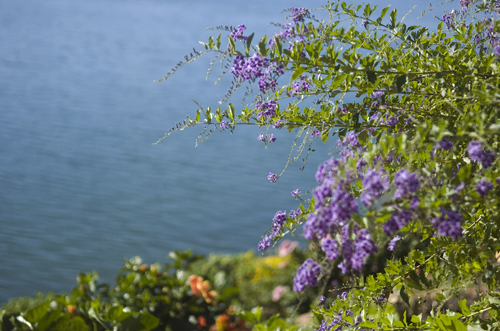
At f/2.8 only the branch at the top right is in focus. The water
and the branch in the foreground is out of focus. This
gives selective focus of the top branch.
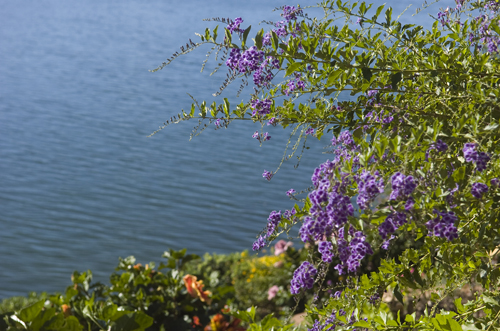
At f/5.6 the branch in the foreground is starting to
come into focus.
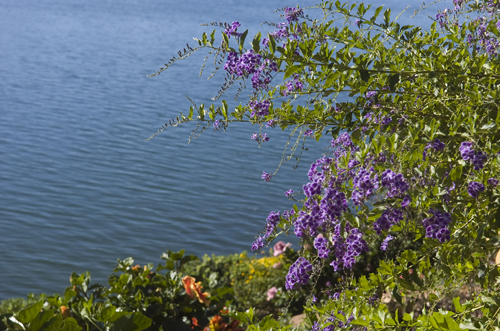
At f/8 the foreground branch is in focus and the water has
started to come into focus.
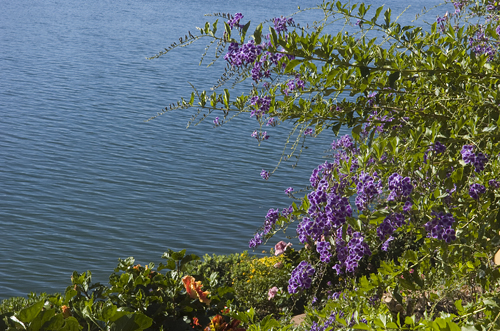
At f/22 all the image is in focus including the water.

